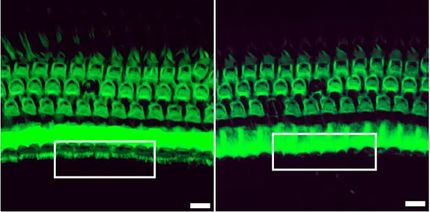Protein "Chaperone" Interactions Found to Play Major Role in Cystic Fibrosis
Findings May Point to New Treatment Options for Numerous Diseases
Advertisement
Scientists at The Scripps Research Institute have described for the first time key protein interactions that contribute to the development of cystic fibrosis. These findings may provide a new framework for the correction of cystic fibrosis and other protein folding diseases. Cystic fibrosis is triggered by a genetic mutation that causes the defective folding and retention of a specific protein in the endoplasmic reticulum, the part of the cell used for protein translation, folding, and for preparation for transport to the surface of the cell. Normally, this essential protein-called cystic fibrosis transmembrane conductance regulator (CFTR)-acts as a membrane channel for control of movement of sodium and chloride ions between the inside and outside of the cell. The correct salt balance across the cell surface is critical for water balance throughout the body.
In the new study, the scientists used mass spectrometry and multi-dimensional protein identification technology to describe how the heat shock protein Hsp90 and other molecular chaperones and co-chaperones (chaperone helpers) control the stability of the critical CFTR protein. Earlier studies by the Balch and Kelly groups at Scripps Research raised the possibility that the chaperone environment might play a critical role in establishing a diverse range of stabilities that efficiently support the export of both soluble and membrane anchored cargo such as CFTR to the cell surface, a conclusion that now appears to be confirmed by the results of this latest research.
While more than 1,500 different mutations of the cystic fibrosis gene have been found, the dF508 mutation is the most common, occurring in approximately 70 percent of all cases of cystic fibrosis, according to the National Institute of Diabetes & Digestive & Kidney Diseases. Importantly, in the study the scientists were able to reverse the disease process in cell culture for the dF508 mutation by partial siRNA silencing of the Hsp90 co-chaperone ATPase regulator Aha1.
"We found that changes in the Hsp90 co-chaperone folding environment dramatically altered the stability and export of the misfolded dF508 CFTR protein from the endoplasmic reticulum," said Research Professor William Balch, Ph.D. "These findings are consistent with the view that the cellular chaperone pool does not simply prevent aggregation, but can regulate specific cellular protein folding pathways, controlling the success or failure of the protein fold, even misfolded proteins, for function and export."
"The study's identification of the interactions that contribute to CFTR folding should play a pivotal role in any future study of the molecular basis for the disease," Balch continued. "In addition, the research points to Hsp90 and its co-chaperones as possible therapeutic targets, meaning that we may have the potential to control misfolding diseases like cystic fibrosis. In fact, by focusing on correcting the protein fold, we may be able to inhibit many of the later interactions that contribute to the pathology of cystic fibrosis and other terrible diseases."
Original publication: William Balch Xiaodong Wang, John Venable, Paul LaPointe, Darren M. Hutt, Atanas V. Koulov, Judith Coppinger, Cemal Gurkan, Wendy Kellner, Jeanne Matteson, Helen Plutner, John R. Yates III ,Jeffrey W. Kelly , John R. Riordan; "Hsp90 Co-Chaperone Aha1 Downregulation Rescues Misfolding of CFTR in Cystic Fibrosis"; Cell 2006.
Other news from the department science
Most read news
More news from our other portals
See the theme worlds for related content
Topic World Mass Spectrometry
Mass spectrometry enables us to detect and identify molecules and reveal their structure. Whether in chemistry, biochemistry or forensics - mass spectrometry opens up unexpected insights into the composition of our world. Immerse yourself in the fascinating world of mass spectrometry!

Topic World Mass Spectrometry
Mass spectrometry enables us to detect and identify molecules and reveal their structure. Whether in chemistry, biochemistry or forensics - mass spectrometry opens up unexpected insights into the composition of our world. Immerse yourself in the fascinating world of mass spectrometry!


















































